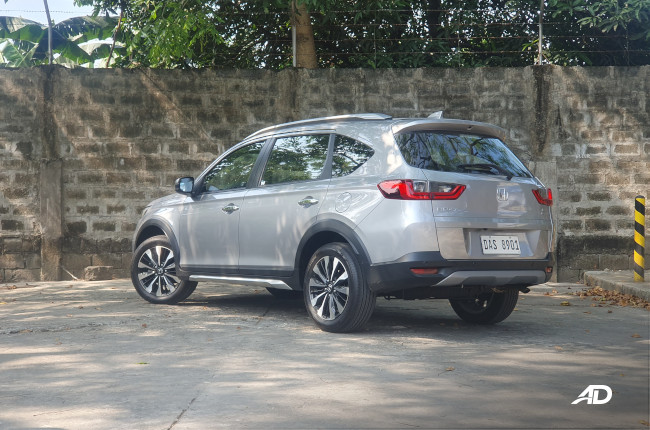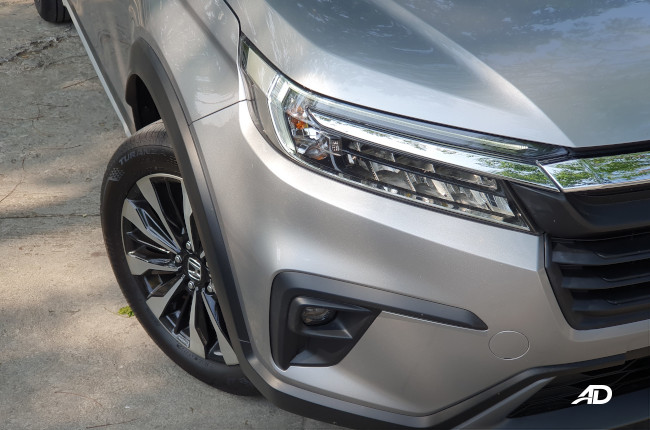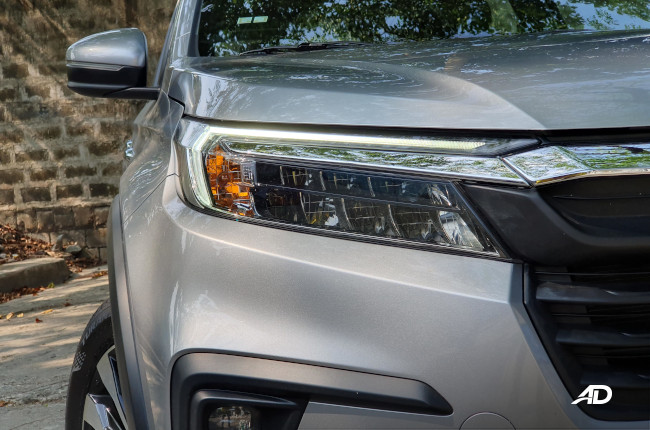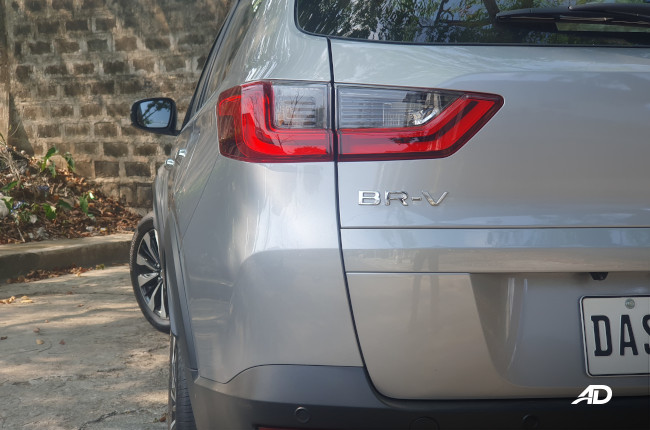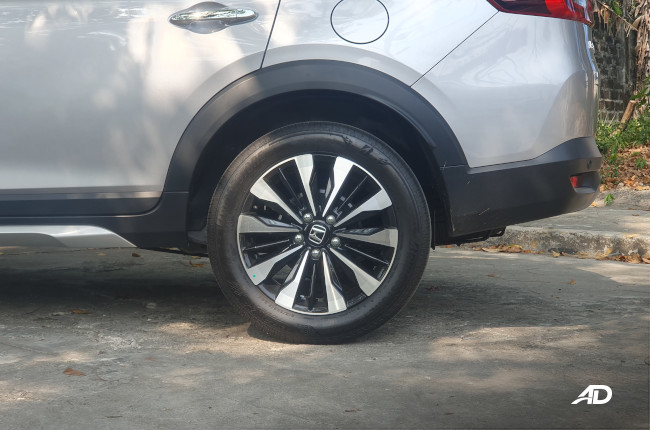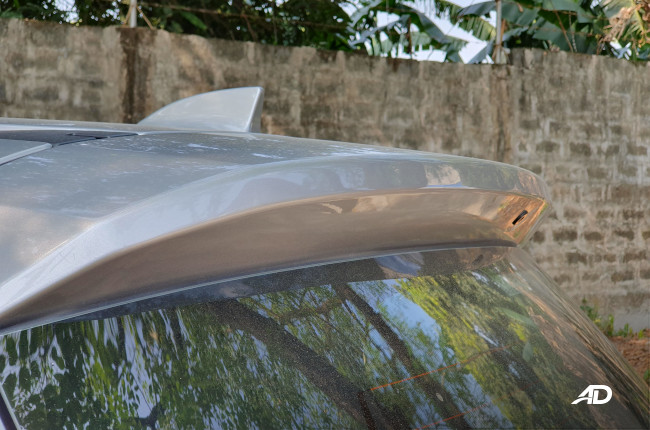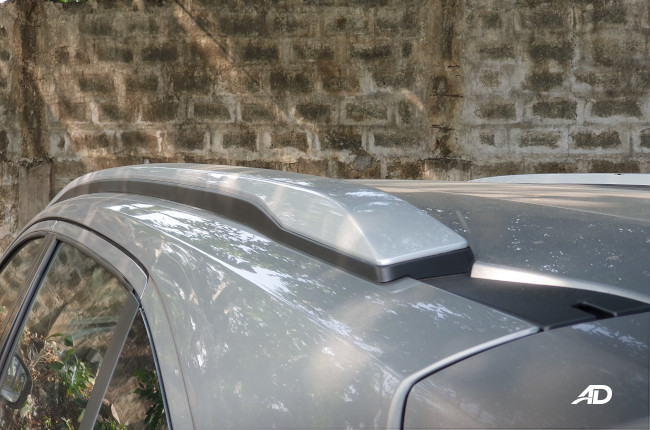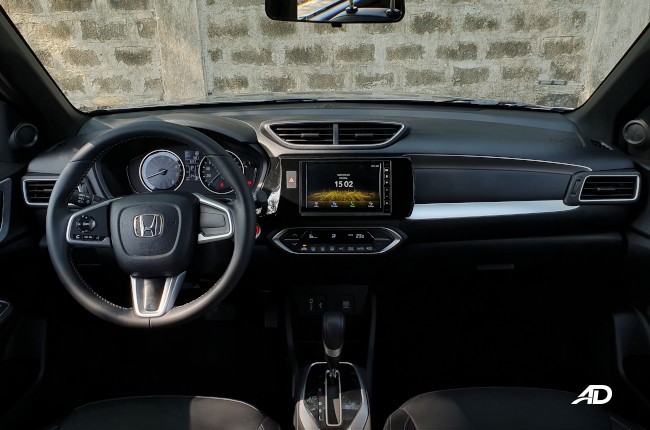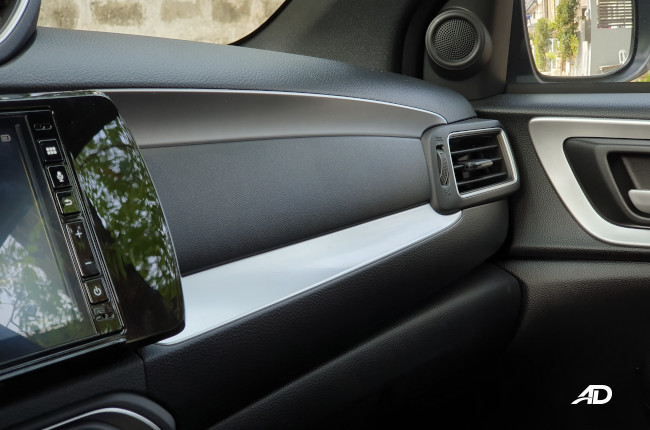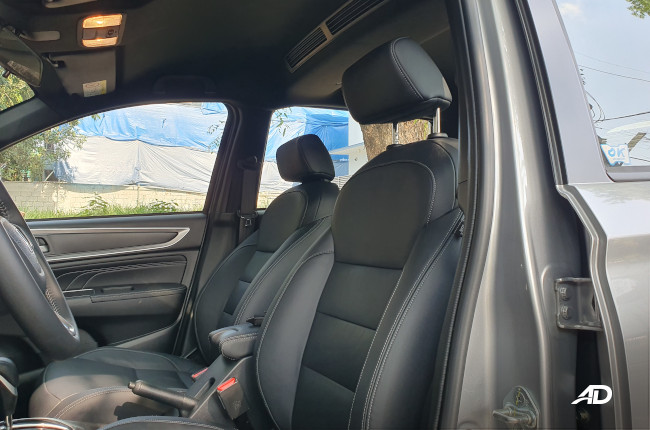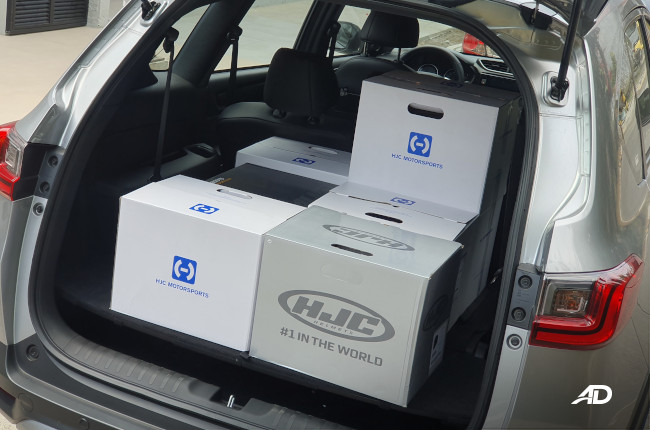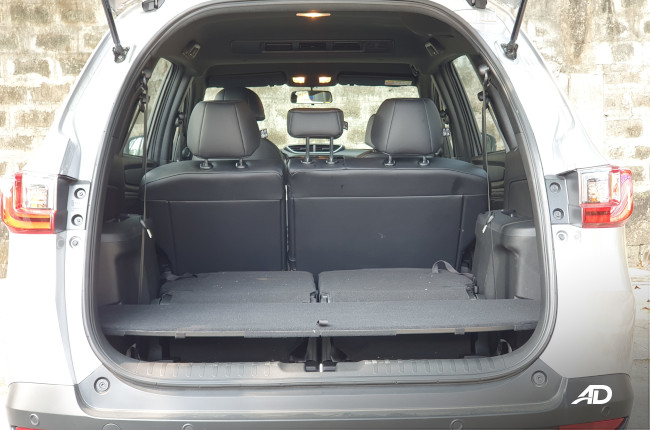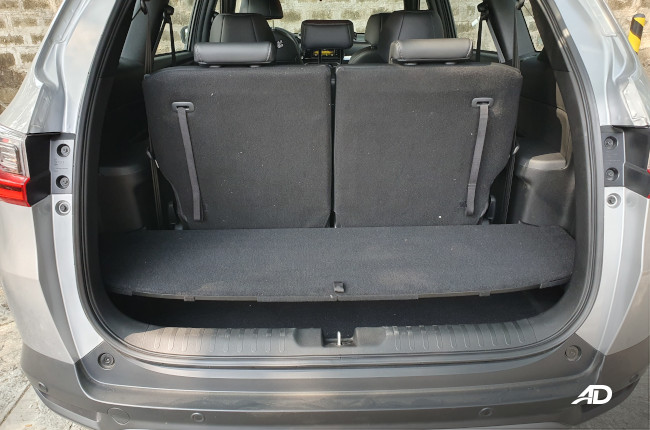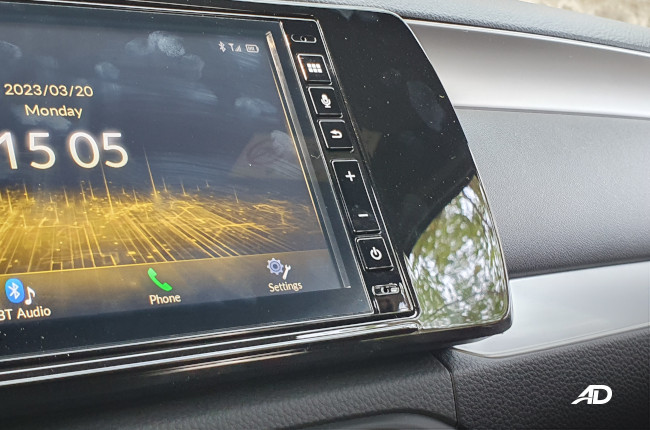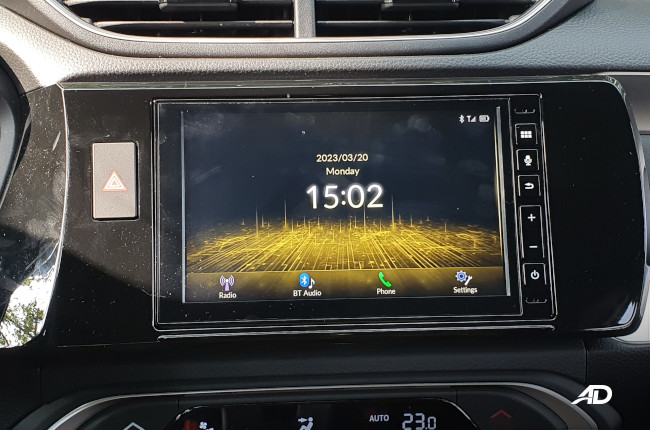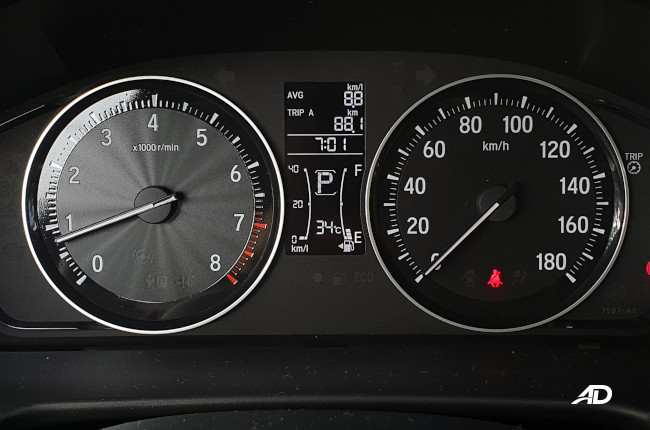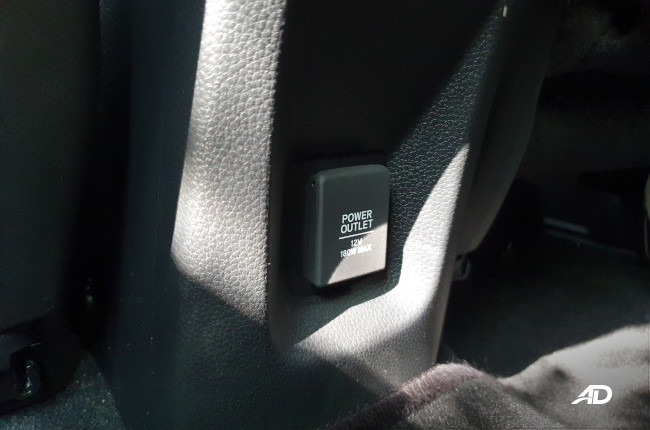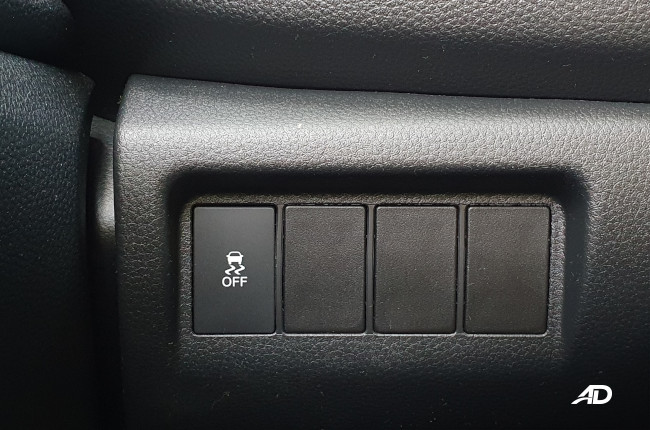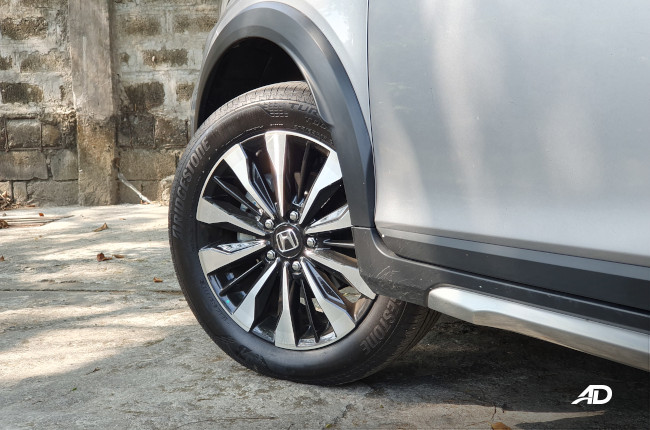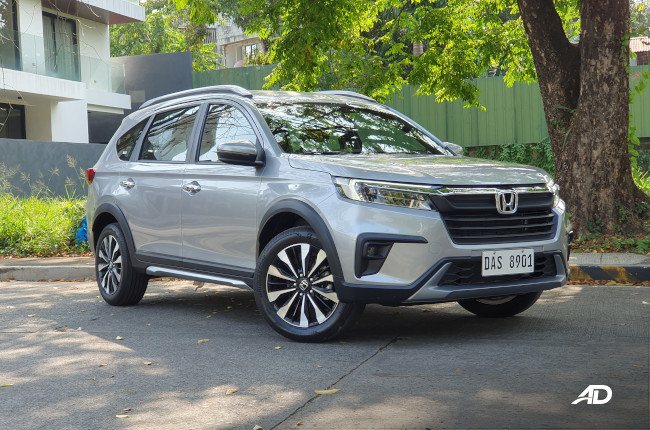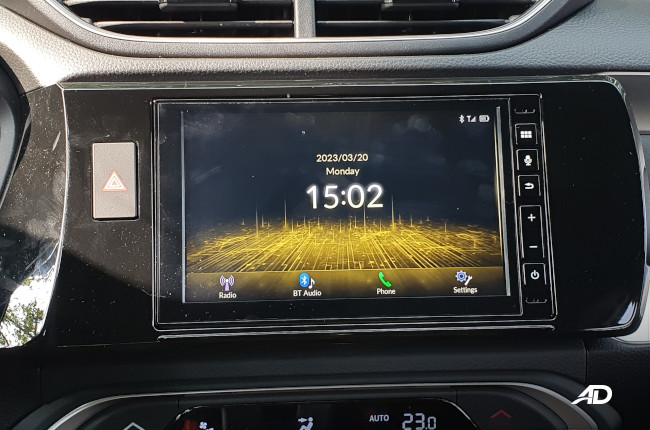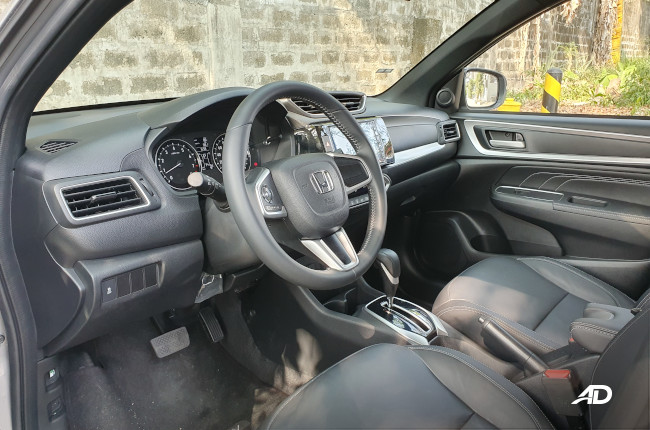
The Honda BR-V is almost always seen in its top-of-the-line trim, but here’s a more affordable model that we feel that a majority of the car-buying public may be able to afford. This is the Honda BR-V in its V trim, the middle child in the lineup that slots between the S and the VX.
Will this seven-seater be the one that most people will buy? We feel that it will be, but does it have what it takes to take on the rest of the seven-seaters in the market? Let’s see if this mid-level variant has what it takes to be your next MPV.
Engine Output (HP), Acceleration, Transmission, Handling 4.0/5
Exterior & Interior Design, Quality, Fit and Finish, Ergonomics 4.5/5
Cabin Comfort, Suspension, NVH Insulation 4.0/5
Convenience Technologies, Active and Passive Safety Features 4.0/5
Amount of the vehicle you get for the price, Fuel Efficiency 3.0/5
- Apple CarPlay and Android Auto
- Peppy engine for its class
- One of the better-designed MPVs
- Rear cargo area is useable, but a little compromised
- Very stiff "leather" upholstery
- A little pricey given the competition
Exterior
When Honda first announced the BR-V, we got a good look at the top-of-the-line VX trim, and it wowed quite a number of car buyers and netted Honda a bunch of sales even before official availability was announced. We also got the BR-V in other trims, namely the S and the V, the latter of which is the unit we have for review.
Now, as the middle-of-the-road option, it doesn’t look too bare, ad it doesn’t look too decked out. Is it just right? Well, to us just about right. You’ll still get the updated looks so at least that’s something to write home about. Honda did well for the BR-V’s redesign, opting for classy lines and a number of changes that modernized the MPV and bring it in line with the rest of the Honda lineup. Do we like it? Pretty much so. We’d say that it’s one of the better-looking MPVs out there, and the silver color that we got the car in did just enough for the model to make it look good.
We will also give it good marks for amenities, as it has LED headlamps, but also with foglamps and with LED DRLs to boot. The car looks like it's more expensive VX brother, and it’s all the better for it. However, we will say that the chrome isn’t our favorite part of the car, though it’s no dealbreaker by any means, you can’t escape it anyway, even on the top-spec VX trim. Apart from that, the model also gets a generous amount of ground clearance, 207mm to be exact, while the wheels of this variant come in at 17 inches in diameter. Overall, it’s a good-looking MPV, and we reckon that it’s one of the better-looking models in its class.
We will also give it good marks for amenities, as it has LED headlamps, but also with foglamps and with LED DRLs to boot. The car looks like it's more expensive VX brother, and it’s all the better for it. However, we will say that the chrome isn’t our favorite part of the car, though it’s no dealbreaker by any means, you can’t escape it anyway, even on the top-spec VX trim. Apart from that, the model also gets a generous amount of ground clearance, 207mm to be exact, while the wheels of this variant come in at 17 inches in diameter. Overall, it’s a good-looking MPV, and we reckon that it’s one of the better-looking models in its class.
Interior
While it’s all new and mostly praises for the exterior, the interior tells a different story. Since Honda didn’t fiddle too much with the platform, the model only gets a minor refresh on the interior, with more emphasis on the technology features, but more on that later. Stepping into the interior, you are greeted with a leather interior, but it only takes one sitting to feel a bit short-changed. The upholstery material that Honda used for the seats of the BR-V’s V trim is quite hard, and not as soft as we would have liked. The sides, however, are soft, which is a bit mind-boggling since the bolsters are usually the places where the harder materials are put on.
Following that, the dashboard is predominantly plastic. While the model is by no means a luxury car, it would have been nice to see at least some soft touch material on the dashboard. We will say, however, that the sidings are covered in leather in key areas like armrests, but the BR-V doesn’t feel too special when it comes to interior trim.
Space, on the other hand, is Honda’s saving grace in the BR-V, well, mostly anyway. The model’s front seats are roomy and supportive even if they are covered in plasticky upholstery. The rear seat space is adequate and individuals who are about average height or slightly taller could find themselves in a comfortable seating position here. The rear, just like all the other cars in the segment, is a little tight, but that’s to be expected. At least the middle row can slide forward which will allow your rear passengers to be a little bit more comfortable. However, the BR-V’s Achilles heel then is still another complaint now, since the rear seats don’t fold flat and into the car. There is a bit of a lip when it comes to the cargo area of the car, so Honda opted to put a board at the back to make it “flat.” We’re still unimpressed with this turnout, and other models have long been able to deliver a truly flat cargo area. In numbers, you get 530 liters of space with the third row folded, and 1,032 with the third row folded.
Comfort

Whether you’re sitting or driving the BR-V, it is as its segment suggests, acceptable and roomy. Comfort-wise, we found that there wasn’t a lot to complain about when riding the car. Space was enough and there were enough cubby holes and storage spaces for us to place our phones, wallets, and even water bottles. Although, the ride comfort isn’t unacceptable by any means, just slightly better than average. Equipped with a MacPherson Strut in the front and a torsion beam setup in the rear, bumps, and potholes didn’t penetrate the cabin much, but it wasn’t a totally smooth ride either. You will still feel when the BR-V goes over a bump, but it’s not too intrusive by any means.
Driving, however, is a different story. The car is more comfortable up front, but there is a bit of a thud but it’s just a part of the car. Nothing is broken, but there is a certain looseness with regard to the front when going over bumps. It’s safe, however, and it won’t steer the car off its line, but it’s something noticeable. In summary, driving comfort is much like passenger comfort, not too floaty, but not too bumpy. It’s about right, but the car does lack a feeling of denseness.
Technology
One high point in terms of updates is with regard to the technology on the BR-V, but with the V variant of the model, we don’t get the high-end Honda Sensing suite of features. However, we do get the Android Auto and the Apple CarPlay-capable seven-inch head unit and the updated gauge cluster with a 4.2-inch screen flanked by two gauges. We noticed these things right away and put the unit through its paces, going through menus and interacting with the buttons. The interface was fluid and there wasn’t a lot of stutter, and it’s a great upgrade compared to the head units that Honda fielded in the previous BR-Vs.
Apart from that, we get a number of features on the tech front, namely the keyless entry system along with smart entry and a push-start system. You’ll also find a reverse camera here but that’s pretty much it. In practice, the specific variant has everything that you need, but it leaves something to be desired, which is a sentiment that is also common with the other models in the class. We were at least hoping for cruise control on this model, but it's not available, only in the upper variant will you see a cruise function.

However, you have to remember that this is the middle-spec variant. The top-of-the-line VX trim comes with even more goodies on top of the ones we just mentioned. As it stands, the V has decent equipment, but it’s nothing too impressive because the VX exists. Overall, however, it’s decent.
Driving and Handling

The BR-V in all respects is a normal car. It’s meant to be driven normally, and smoothly, which it achieves without much fuss. The MPV is a small step down from the driving characteristics of the CR-V, Civic, or the HR-V. The steering is slightly less planted and direct than Honda’s more expensive offerings, but the electronic power steering is competent, lightweight, and fine for your day-to-day drives. Handling is a little on the light and vague side because of this, but most drivers won’t need that anyway since there’s little hint of sporting prowess that’s advertised anyway.

The engine is a 1.5-liter naturally-aspirated engine that produces 119 hp and 145 Nm of torque, mated to a CVT. The combo is nothing new and what we expect from mid and top-spec Hondas at this price point, and it gets the job done nicely. The 1.5-liter is a little rev-happy compared to other MPVs in the class, and it’s quite peppy even given all the BR-V’s weight. Once advertised as the most powerful in the class, the BR-V lives up to that reputation quite nicely until now. The model doesn’t feel like it’s too underpowered, and the CVT is decently tuned for a smooth but consistent pull when accelerating. Again, the word we’re going to use is decent, and it’s definitely one of the more spritely mills in the MPV class today.

We were able to load up the BR-V with a decent amount of people and some cargo, but the engine didn’t bog down. Highway performance isn’t too great with this setup and there is a noticeable slowdown in its acceleration when loaded up. Fully loaded, we reckon that the model will be just okay. Your fuel economy will definitely take a hit, and you will have to step on the gas a little longer.
Fuel economy

During our city runs and commutes, the BR-V was able to average about 10 km/L in medium to heavy traffic. The number goes down from there if traffic gets any worse, but we never went below 7 km/L during our time with the car, your mileage may vary.
On the highway, the model was able to push out up to 18 km/L with overtakes and long stints of cruising over a long stretch of road. Once we got back to the city, we checked the economy rating and got 14.3km/L, which will serve as our mixed figure for this model.
Safety

The safety features in the V variant of the BR-V are parred for the course in the segment, but nothing spectacular. You got all your bases covered, however, with two airbags, abs with electronic brakeforce distribution, vehicle stability assist, hill start assist, emergency stop signal, ISOFIX anchors, a security alarm, reverse camera, and engine immobilizer, and speed sensing door locks.
Following that, nothing more. In order to get the top-of-the-line advanced Honda SENSING features, you’ll need to pay a premium on top of the price of the V variant in order to get the VX. As it stands, however, no other Japanese MPV offers a similar feature set to the VX, but the V is par for the course.
Verdict and price

Everything seems to be in order for the BR-V in its V variant. The model has just enough kit to keep up with the most popular MPVs in the market, however, the platform itself is a little lacking considering that Honda didn’t really change much going from the previous gen to the current gen. The BR-V does have some shortcomings, but nothing really to be an absolute dealbreaker.
Though, while this mid-tier variant gets a thumbs up for its spec, and the option to go for more with the VX in the lineup, it’s a little pricey. At P1,295,000, it encroaches on the higher-end spectrum of the market, with the argument being that it is an SUV-like MPV. The incentive to go with this car lies in its engine and its design. The BR-V is one of the more capable MPVs out there with its spritely engine that doesn’t bog down as much when loaded with a ton of weight. It gets the job done better than its rivals. Overall, it’s a decent spec, not too remarkable for its technology, but it has everything you need and more which is saying a lot compared to some other rivals in its class. Safe to say, however, that the MPV class got a level up in the last few years, and Honda is one of the brands that is leading the pack with the BR-V, not this particular variant, though, as the VX is the most innovative variant in the lineup while this V variant is a respectable but slightly pricey choice.
Exterior Photo Gallery
Interior Photo Gallery
Specifications
Engine
1.5 LFuel Type
GasolinePerformance
119 hp @ 6,600 rpmTransmission
CVT-
Summary
-
Name Honda BR-V 1.5 V CVT Body Type Crossover Price ₱1,295,000 Transmission Category CVT -
Engine
-
Engine Size 1.5 L Displacement 1,498 cc Number of Cylinders 4 Number of Valves 16 Transmission Type Continuously Variable Transmission -
Performance
-
Drivetrain Front-Wheel Drive Max Output (hp) 119 hp @ 6,600 rpm Max Torque (nm) 145 Nm @ 4,300 rpm -
Economy & Environment
-
Fuel Type Gasoline Emissions Standard Euro 4 Fuel Capacity 42.0 L *Combined Fuel Consumption 14 km/L *brand manufacturer claim
-
Dimensions
-
Length 4,490 mm Width 1,780 mm Height 1,685 mm Wheelbase 2,700 mm Turning Circle 11 m Ground Clearance 207 mm Trunk Capacity 244 L Number of Doors 5 Number of Seats 7 -
Safety & Security
-
Driver's Airbag 1 Front Passenger's Airbag 1 Side Airbag 2 Curtain Airbag Knee Airbag Auto Brake System Electronic Brake Distribution Anti-lock Brake System (ABS) with Electronic Brakeforce Distribution (EBD)
Immobilizer Security Alarm Stability Control Electronic Door Locks Speed Sensing Door Locks ISOFIX Lane Departure Warning System Blind-Spot Detection System -
Features
-
Cruise Control Front Parking Sensors Rear Parking Sensors Leather Upholstery Push Start Button Wheel Size 17 in Wheels Metal Type Alloy Airconditioning System Automatic Air-Conditioning Entertainment System 7-inch Touchscreen Audio Connectivity Apple Carplay, Android Auto, Bluetooth, and USB Navigation Ready Warranty 3 Years (100,000 km) Keyless Entry Roof Rack Sunroof Electric Adjustable Seats Power Steering Power Windows Power Outlet Steering Wheel Audio Control -
Technology
-
Active Park Assist Hill Start Assist AWD Modes n/a Tire Pressure Monitoring Heads-up Display Power Liftgate Start-stop System
Colors
Latest Review
-
Addictively excessive: The Ford Ranger Raptor Twin Turbo V6 / Review
The Ford Ranger Raptor Twin Turbo V6 is one crazy pickup truck. Wondering why? Just keep reading.
4.6 / 5 -
The Kia Carnival gives you more: More seats, more comfort, and more practicality / Review
The Kia Carnival is a three-row MPV designed for executives and families. It combines comfort, technology, and practicality, making it a strong choice for those looking for a premium people...
4.2 / 5 -
The Jetour Ice Cream: A pint-sized EV that’s hard to ignore / Review
The Jetour Ice Cream is an adorable, pint-sized electric car that’s made for the city. Affordable and stylish, it’s easy to love, but does it tick all the boxes for you?
3.7 / 5
Popular Articles
-
Cheapest cars under P700,000 in the Philippines
Jerome Tresvalles · Sep 02, 2024
-
First car or next car, the Ford EcoSport is a tough package to beat
Jun 18, 2021
-
Car Maintenance checklist and guide – here’s everything you need to know
Earl Lee · Jan 12, 2021
-
Most fuel efficient family cars in the Philippines
Bryan Aaron Rivera · Nov 27, 2020
-
2021 Geely Okavango — Everything you need to know
Joey Deriquito · Nov 19, 2020
-
Family cars in the Philippines with the biggest trunks
Sep 20, 2023
-
Head to head: Toyota Rush vs. Suzuki XL7
Joey Deriquito · Oct 28, 2020
-
Why oil changes are important for your car
Earl Lee · Nov 10, 2020
-
2021 Kia Stonic — What you need to know about it
Joey Deriquito · Oct 16, 2020
-
Top 7 tips for buying a used car in the Philippines
Joey Deriquito · Nov 26, 2020




